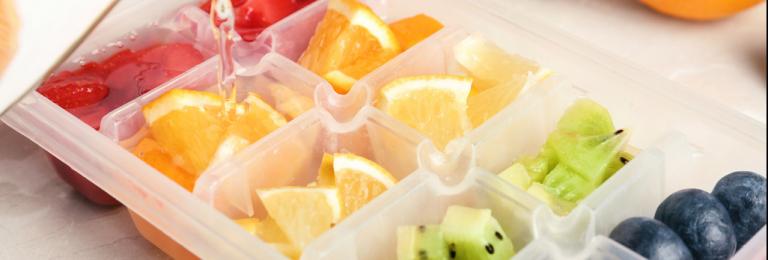Learning About Ice
Why is it important?
Water is essential to life and makes up 60% of our bodies. Teaching kids about water may help them drink it regularly which is so important for their health and hydration. Learning about water’s properties is also a great first science experiment for young children. Here are some fun and safe activities to learn about water when it freezes at 0 °C.
How to show water freezing:
• Different shapes can be a great way for children to explore ice, rather than ice cubes. Have children help fill the different shaped containers with water then place them carefully in the freezer. Check your kitchen for containers with different shapes—round, square or place cookie cutters in a container of water and then pop out the shapes. Or look for ice cube trays of different shapes, like hearts or diamonds. Children will learn that ice will take on the form of the container it’s frozen in.
• Special ice cube additions are fun for children to help with. Place clean ingredients like herbs and small pieces of fruit (chopped to reduce choking risk) on a tray and let them fill their ice cube before it gets frozen. Or even more fun—do this in popsicle molds and add a plastic or wooden popsicle stick before freezing.
• Different colours from the addition of juice, like cranberry or grape. Get the kids involved by giving them eye droppers to add small amounts of juice to water in the ice cube trays.
Other experiments:
• Place ice cubes in a cup of water for each child and ask them what they observe ( e.g. a hissing or popping sound, that ice floats ,that it may crack, that melts and turn back into water).
• Make shaved ice by pulsing ice cubes in the blender or food processor. Give each child a small bowl of it to observe and eat.
• Paint with ice cubes wrapped in a paper towel to prevent little hands from getting too cold. Be sure to cover your table with plastic and wear painting smocks or aprons. Sprinkle a small amount of powdered paint on a paper and let children use the ice cube as a paint brush. This is a non-eating experiment!
• Make ice cube towers on paper towels or plates. Observe how slippery and hard to stack they are. Unless the secret ingredient..salt…gets sprinkled on the cubes, which provides some grip, just like on an icy sidewalk.
